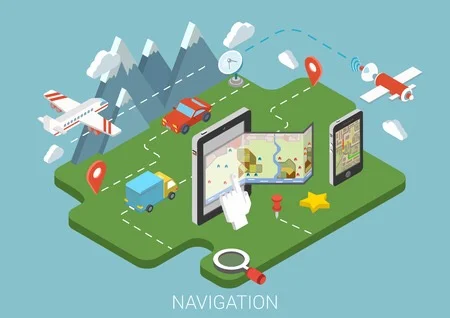Cutting the cord
The impact of wireless charging
By Laura Haight
What do smartphones, tablets, laptops, electric cars and buses all have in common? They all have to be plugged in. And despite the rapidly changing growth of new technology, that’s a limitation that has slowed down some groundbreaking developments.
A survey by the National Research Council included lack of a widespread charging infrastructure as one of the key obstacles to more extensive adaptation to plug-in electric vehicles (PEV). Since that survey, nearly two years ago, the infrastructure has expanded. You can find vehicle charging stations in all the Greenville parking garages, for example. But there is still uncertainty and inconsistency, known as “range anxiety.”
But what if you could recharge your car while you drive? Dynamic charging lanes have been tested with electric buses in South Korea, and are under development for a major project in Great Britain.
This is just one significant advance being studied for what is generally known as wireless charging, which incorporates concepts like “magnetic resonance” and “inductive coupling”. Last month, global leaders in wireless power from research firms to consumer industries met in Seattle, WA, for an annual summit to discuss technology advancement, new product development, industrial and infrastructure applications.
Like dynamic charging lanes, all wireless power applications involve electric current running through a coiled wire transmitter that produces a localized magnetic field. The systems utilize magnetic resonance which essentially makes the roadbed a charging system for a suitably equipped electric vehicle.
If you have an Apple Watch, Samsung Galaxy, or an electric toothbrush you are already experiencing the some early iterations of what could be a truly disruptive technology. Your device rests on a substrate but does not have to plug directly into anything to charge. The next step? Untethered charging simply by being within a specific radius of a transmitter.
BetaMax vs VCR
Remember the early days of TV recordings? OK, maybe not. But you still probably know what a VCR was, while you likely haven’t heard of BetaMax. The two competing standards vied for consumer love. BetaMax lost. The same thing is happening now with wireless charging between Qi and PMA. We don’t know who the winner will be, but we do know that Apple has adopted Qi; Samsung is throwing in with PMA. And there are now dual-mode chips that incorporate both standards.
Why does wireless charging matter when we are surrounded by a vast infrastructure of electricity?
Let’s start with the availability of outlets. I can’t speak for you, but just to power my office, I need three power strips and another couple of outlets to handle the computer, the second monitor, the task lights, the chargers for my phone and tablet, the cordless phone, WiFi router, television, Apple TV, wireless headphone charger and shredder. Whew. That sounds like a lot of stuff, but it’s probably no different from your house. Traveling requires lugging a bag full of plugs and chargers, and perhaps a power brick, to ensure you can keep all your devices charged.
Legacy battery technology is also problematic. Battery life is based on a certain number of charging cycles. Over time, batteries degrade reducing the amount of charge they can hold and increasing the number of charges needed to keep going. The more charging you have to do, the shorter the life cycle. Your phone’s battery is probably good for 300-500 charges. If you have to charge every day, your phone’s life expectancy is about a little more than 18 months.
Power, we need more power
Researchers, startups and manufacturers are stepping up their efforts. Global revenues for wireless power transmitters and receivers are expected to rise past $12 billion by 2020, up from $750 million in 2014, according to TechCrunch. Uses for wireless power, coupled with demand, go far beyond cell phone users. The Internet of Things is driving much of consumer demand as the home automation product segment balloons.
There are already some mainstream businesses getting out in front of wireless charging.
Starbucks partnered with Powermat two years ago. The company launched free wireless charging, via inductive plates embedded in the tables, at 200 San Francisco cafes and recently expanded to 14 stores in and around Boston, MA, and in the UK.
Airports are a hot spot for frustrated travelers feeling powerless. So Verizon partnered with Qi to put some 800 wireless charging stations in the nation’s largest airports. But with wireless charging typically slower than traditional plug ins, it may be more effective for topping off. The kiosks, however, do offer entertainment options, i.e. commercials, while you are waiting.
Ikea has introduced a line of furniture that has embedded wireless charging, including a lap with the induction coil, a bedside table with a built in pad and more.
Kube Systems, maker of a universal technology called the PowerKube has partnered with Marriott International, so you may expect to see wireless charging solutions in your hotel room in the not too distant future.
The 2018 BMW i8, which is said to include inductive charging capabilities. No word yet on the sticker price, but this year’s model is upwards of $141,000. So you figure it out.
While it is easy to see this as a consumer goods advance, significant development and testing is underway by medical technology companies working on the next generation of implantable devices. Cardiac patients, for example, waiting for transplant may be on an LVAD (Left ventricular assistance device), which keeps blood pumping to the heart through internal and external technology. Thoratec, a medical device company, is now working with wireless tech on the potential of a fully implanted LVAD that could even potentially be a permanent device, like a pacemaker.
Technology freed from outlets, bricks, cables and adapters that made us truly mobile? That would really be powerful.



